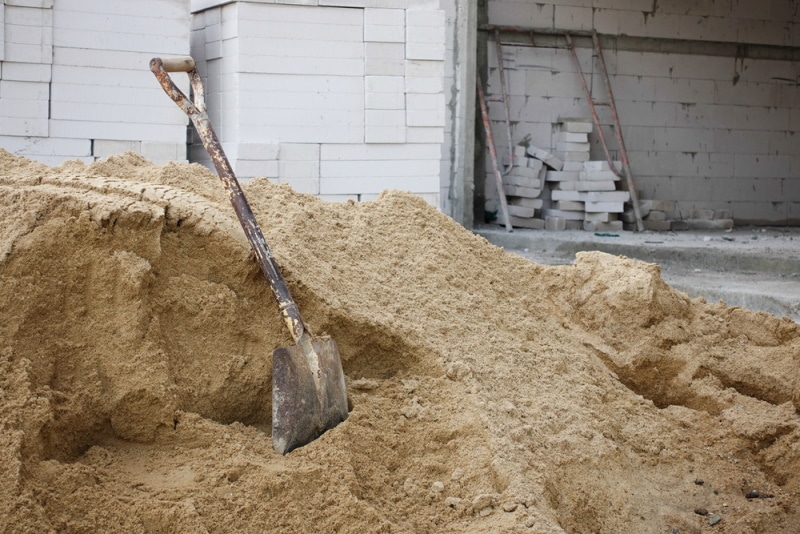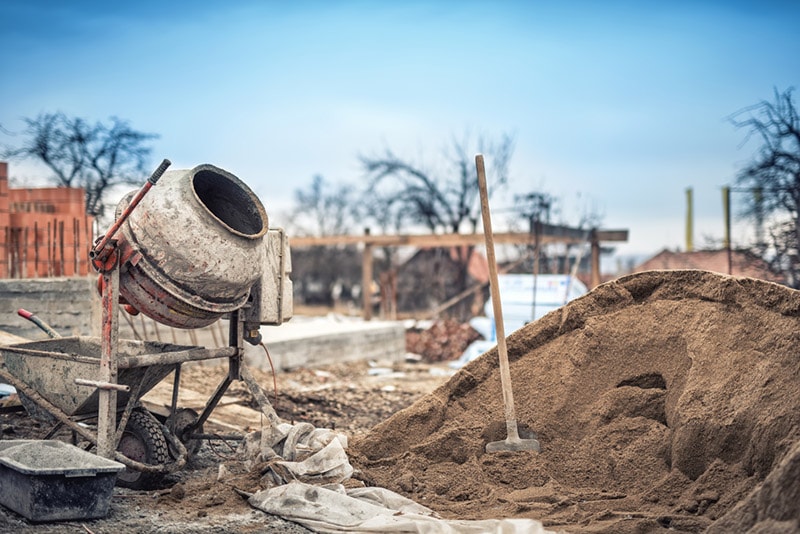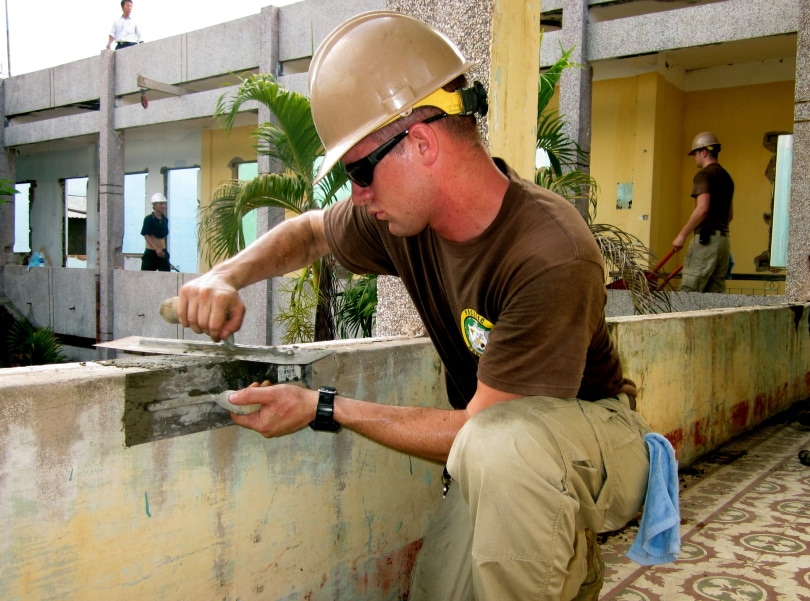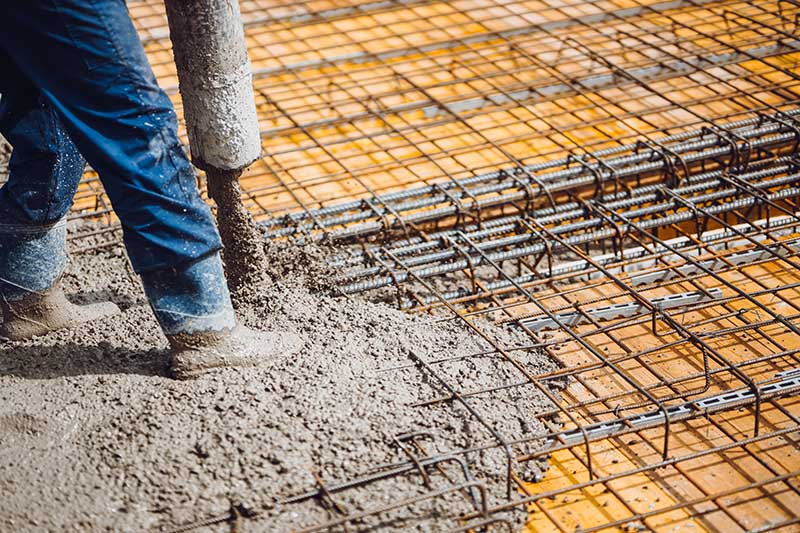What Is Builder’s Sand? (Types, Best Uses, Pros & Cons)
-

- Last updated:

When you are at the local home improvement store, you might come across a product called builder’s sand. Builder’s sand is a common building product. In fact, it is one of the most commonly used products in the world. Builder’s sand might look like regular play sand, but it is something very different. So, what exactly is builder’s sand? What is it used for? Builder’s sand works primarily as an additive. That means that it is mixed with other materials during the construction process.
This guide will cover everything you need to know about builder’s sand, including what you can and cannot use it for, and answers to a slew of frequently asked questions.

How Does It Work?
Builder’s sand is used as an additive in construction projects all over the world. Builder’s sand can be added to everything from cement to building foundations and mortar. Builder’s sand is made up of relatively small and smooth grains. It can vary in color from white to gray to tan, depending on the exact makeup of the sand. Builder’s sand is raw natural sand that is unfiltered and will vary in appearance and characteristics based on where it is mined.
Very rarely is builder’s sand used on its own. It is almost always used in conjunction with another product to give it form and strength.

Different Types of Usable Sand
- Builder’s Sand: Builder’s sand is just one type of sand. Builder’s sand is primarily mined from rivers and lakes. It has finer grains than other natural sands but is much coarser than play sand. Builder’s sand is typically white, gray, or light tan in color.
- Sharp Sand: Sharp sand is another type of natural sand. Sharp sand is typically mined from inland locations from large pits. Sharp sand is larger and coarser than builder’s sand. Sharp sand is free from salt and is much drier than builder’s sand. This makes it great for usages where dry materials are required. Sharp sand is typically orange or red in color.
- Jointing Sand: Jointing sand, also known as beach sand, is another type of sand. This is the sand that most people are familiar with. Raw beach sand has some uses, including recreational areas, golf bunkers, and creating artificial sand. Jointing sand is the basis for play sand but play sand is filtered and washed to make it safe for children. Jointing sand is very fine and yellow in color.
- Artificial Sand: Artificial sand is a mixture of different sands created in a factory for various purposes. Artificial sand is also called manufactured sand or M sand. Artificial sand is usually created by crushing up natural rocks and sorting them to create an ideal mixture. Artificial sand differs from natural sand because it is created and not mined directly from the Earth.
- Play Sand: Play sand is the sand used on playgrounds, in sandboxes, and for various recreational purposes. Play sand is created by taking jointing sand and then filtering it and washing it to remove any natural contaminants. The filtering and washing process is what makes play sand safe for children and very fine.
Consult a landscaping expert
Find a brick and stone specialist in your area, and get free, no-commitment estimates for your project.

Where Is It Used?
Builder’s sand is used in a variety of applications. Masonry work, in particular, uses large amounts of builder’s sand. Builder’s sand is used as a base for both concrete and mortar. It is also used for plastering, bricklaying, block laying, and rendering. Any concrete building will use a large amount of builder’s sand during the construction process. Since many large industrial and civic buildings are made up of concrete, these buildings use massive amounts of builder’s sand. Builder’s sand is used to create massive amounts of mortar and concrete, which is then used in construction. Builder’s sand is a raw resource that is used in many different factories around the world that produce these types of common building materials.
Builder’s sand can also be found being used in the construction of roadways, home foundations, and commercial buildings.

Advantages of Builder’s Sand
Builder’s sand has many advantages. It is cheap, easy to source, and is the perfect additive for most masonry applications. Builder’s sand is plentiful and natural since it is mined from areas of natural sand. Builder’s sand can be bought in small quantities, like a bag, or in large quantities. International construction firms can buy builder’s sand by the barge for large scale construction.
Disadvantages of Builder’s Sand
Builder’s sand has some disadvantages. It cannot be used by children and should not be readily used around the house. It is unfiltered, meaning it can contain carcinogens and unwanted particulate matter. It cannot be used as play sand. It also cannot be used by itself. It is almost always used as a mixing agent. That decreases the functionality for typical residential users.
Frequently Asked Questions (FAQs)
Can You Use Builder’s Sand in Concrete?
Yes. Builder’s sand is one of the best additives for concrete. Concrete is made by mixing Portland cement and builder’s sand. When you buy premixed concrete, you are buying a mixture of builder’s sand and cement that has been measured out into ideal quantities and proportions for your use.

What Shouldn’t You Use Builder’s Sand For?
Builder’s sand is very useful in masonry construction, but it cannot be used for everything. There are a slew of things that builder’s sand should not be used for.
Builder’s sand should not be used in:
- Children’s recreation
- Golf bunkers
- Paving
- Patio laying
Is Builder’s Sand and Sharp Sand the Same Thing?
No. Sometimes these two terms are used interchangeably, but they are technically not the same thing. Sharp sand is sharper than builder’s sand. It has larger, more jagged grains and is sourced from different sand areas than builder’s sand. Sharp sand is also sometimes called pit sand due to the fact that it is mined out of large inland pits.
Can You Put Builder’s Sand in a Sandbox or Playset?
No. Builder’s sand should never be used in a sandbox or playset. Builder’s sand is raw and unfiltered. It can carry carcinogens and natural particles that are harmful to children. Builder’s sand is also coarser than play sand and is less comfortable. Play sand is specifically filtered to remove any dangerous particulate matter to make it safe for children and pets. It is also extremely fine and soft so that it will not cause skin irritation when you come in contact with it. Only buy filtered play sand for sandboxes and playsets.

Where Does Builder’s Sand Come From?
Builder’s sand is mined from the floor of lakes, rivers, and oceans. Sand mining is a large and lucrative business. Sometimes builder’s sand is called river sand because it primarily comes from dredging riverbeds. Builder’s sand is one of the most consumed natural resources in the world after water. It is mined continuously for use in construction projects around the world. Large dredging equipment is used to scoop this valuable sand off of riverbeds, lake beds, and the ocean floor before it is shipped to be processed into usable builder’s sand.
Builder’s Sand vs. Play Sand
| Builder’s Sand | Play Sand |
| Used in construction | Used for recreation |
| Large coarse grains | Small round grains |
| Unfiltered | Highly filtered |
| Unsafe for children | Safe for children |

Conclusion
Builder’s sand is a type of natural sand used in construction. It is primarily used as an additive for masonry purposes and is used to create concrete and mortar. This makes builder’s sand one of the most used products in the world and powers large swaths of modern building projects. You should not use builder’s sand for many residential purposes because it is not filtered or washed to free it of any contaminants that could come out of the ground from the mining process.
Featured Image Credit: iphotosmile, Shutterstock
Contents

